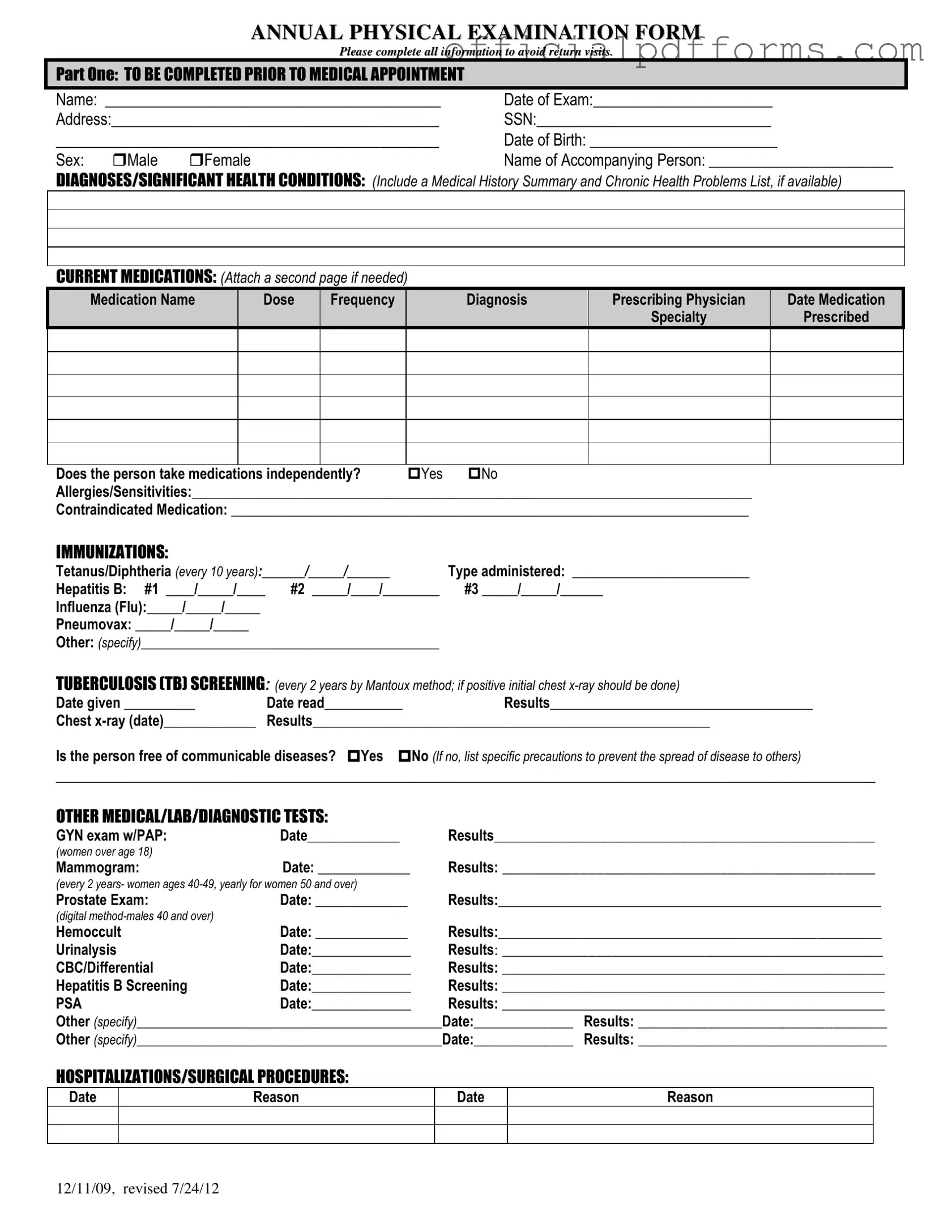Fill in a Valid Annual Physical Examination Form
The Annual Physical Examination Form is a crucial document that collects essential health information before a medical appointment. It covers personal details, medical history, current medications, and immunization records, ensuring that healthcare providers have the necessary data to deliver effective care. Completing this form accurately can help avoid return visits and streamline the examination process.
To ensure your health needs are met, please fill out the form by clicking the button below.
Access Form Online
